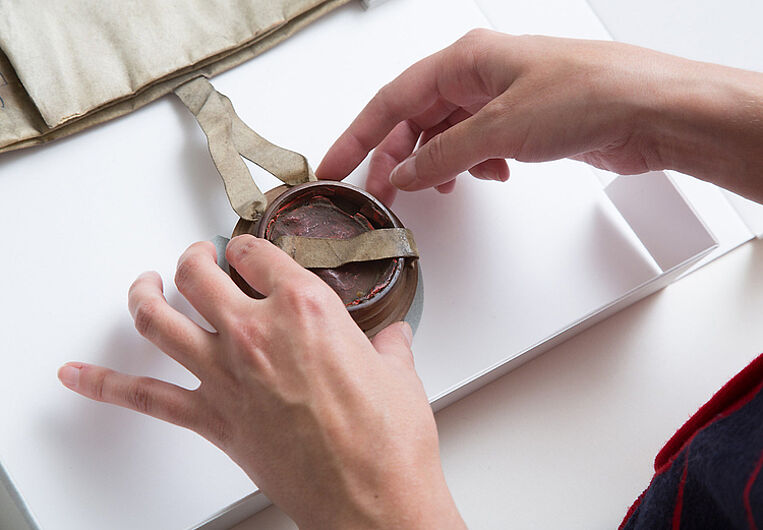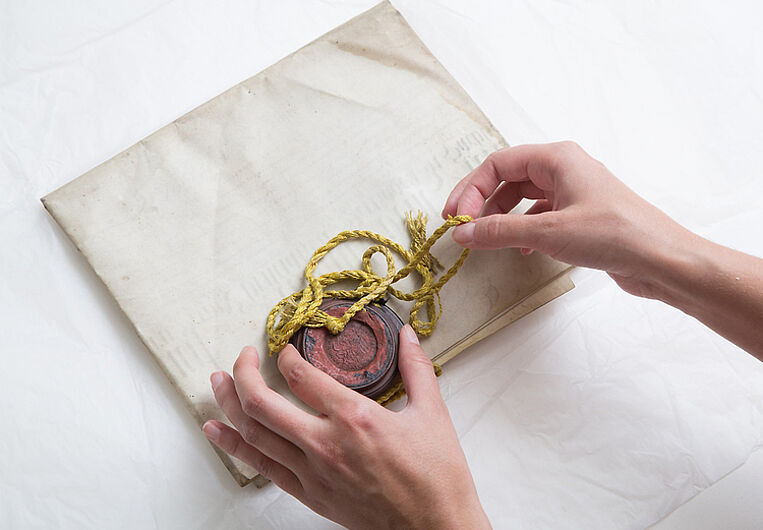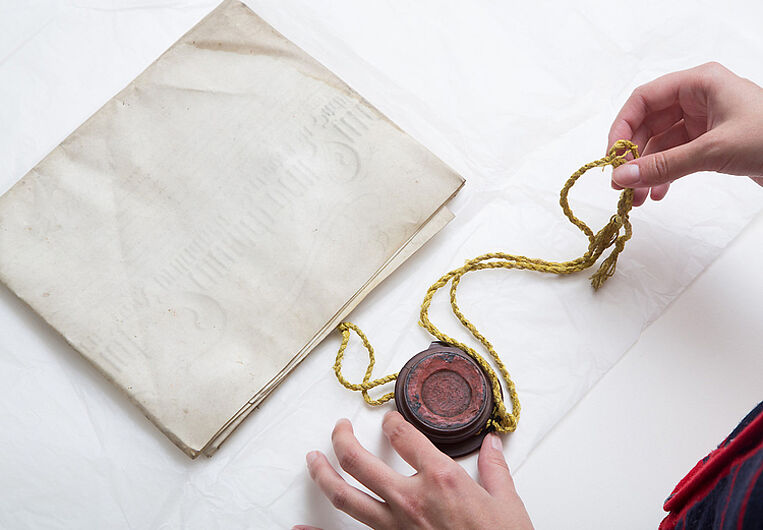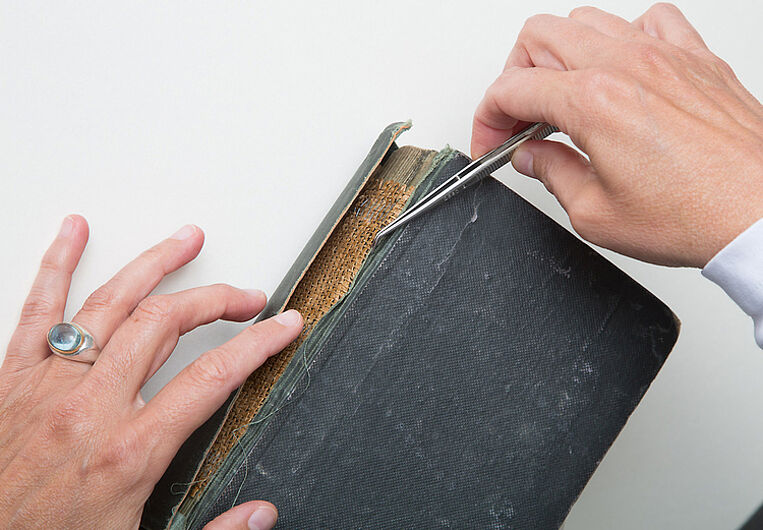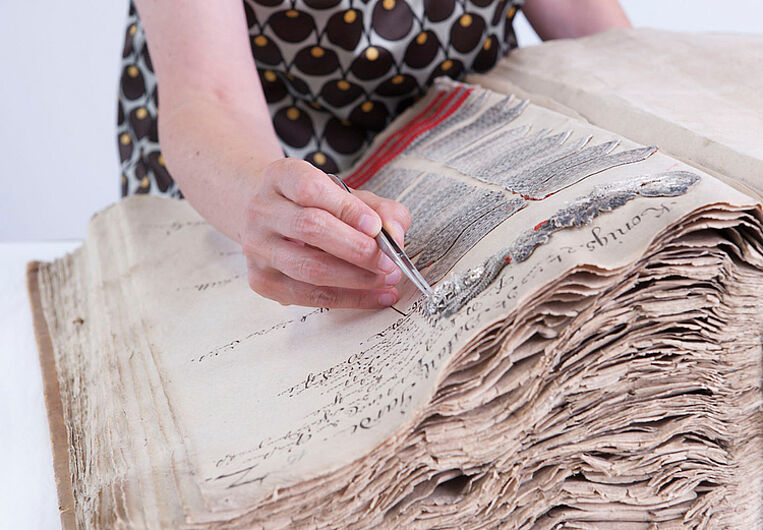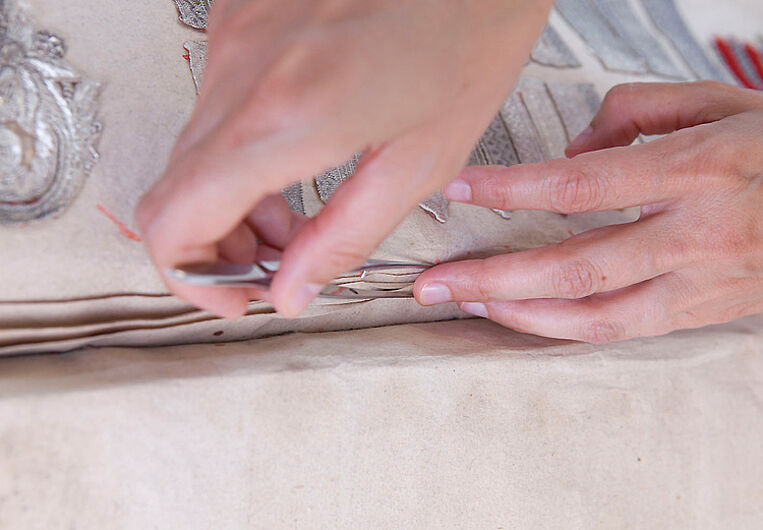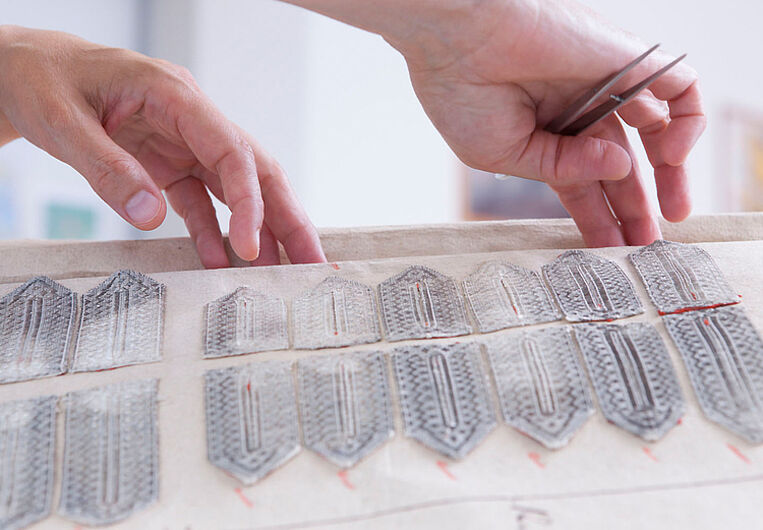Book Conservation
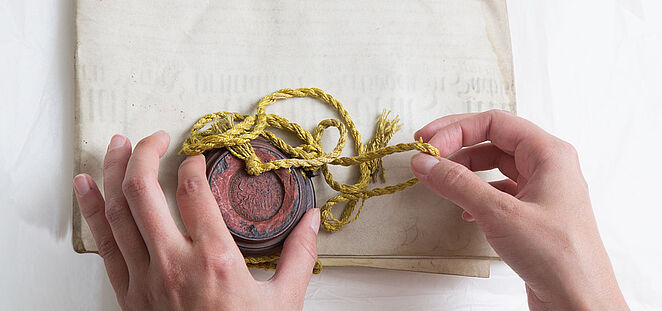
Book conservation is related to paper conservation. However, by comparison, books have 3-dimensional, functional, and movable parts. Many different types of materials can be incorporated into the structure of a book such as fabrics, leather, parchment, metal, and in addition, gold, ivory, paint, or ink for illumination. The extensive collection in the DHM contains historic to modern books with all types of bindings. The wide range of objects encompasses incunable, books, pamphlets, brochures, diaries, autograph and other albums, fabric swatch books, sketchbooks, files, catalogues, and much more.
Historical books are for the most part made from durable long-lasting materials. They show damages attributed to use and wear and as a general rule require only conservation treatments; which are the measures required merely to preserve the object, and few restoration interventions that incorporate additional aesthetic measures.
Ever since the 19th century cheap wood-pulp paper of low quality came into use for the mass production of paper stock, which, in turn, necessitates the development of preservation strategies today. In this way, large collections can be preserved from decay brought about by the accelerated deterioration that originated in the mass production process.
Book conservation in a museum serves, in principle, less the usability of a book, like in a library, but rather serves the authenticity and historically evolved integrity of a book as an exhibition exponent, without consideration of its financial value.
A high priority in book conservation is deemed to be protective presentation techniques in exhibitions. These comprise individual and often elaborate montages and presentation aids, like custom hand-made book supports.
